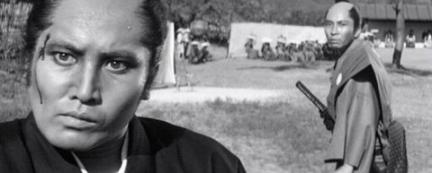Obscure Japanese Film #71
 |
| Kazuo Hasegawa |
Set during the Russo-Japanese War of 1904-5, this Toho production stars Kazuo Hasegawa as Shinzo, a young stage actor in Osaka whose newfound popularity playing military heroes has gone to his head. He has a sweetheart, Hanaryu (Isuzu Yamada), a shamisen player he is planning to marry, but his master, Heikichi (Roppa Furukawa), thinks he has become too arrogant and will never succeed in the long-term if he allows himself to be distracted by marriage. Heikichi decides to ask Hanaryu to break off the relationship for Shinzo’s own good…
In his film The Song Lantern from the previous year, director Mikio Naruse had managed to avoid making military propaganda, but by this point it was a case of either spread the message the authorities wanted to put across or don’t make a movie. The Way of Drama was adapted by the prolific Toshio Yasumi based on a novel by Koen Hasegawa (1904-77). It’s unclear whether the propaganda aspect was present in the original, but the film certainly contains a rather obvious message about the importance of self-sacrifice. The character of Heikichi, the theatre director, is portrayed as a very noble man because he puts on plays about heroic soldiers and keeps ticket prices low so that as many people as possible will learn that the goal of destroying the enemy is far more important than one’s own paltry little life. Of course, this is unlikely to strike a chord with many viewers nowadays, but if we can ignore this aspect of the film, there are some pleasures to be found in the fine performances of Hasegawa and Yamada. Incidentally, the one scene in which Hasegawa is really bad is the opening scene in the theatre, where he plays a mortally wounded soldier delivering his patriotic last words as he expires – could Hasegawa and Naruse have been subtly taking the rise out of the military here?
The supporting cast is also strong and features Takashi Shimura as a rival theatre director, Ranko Hanai as Heikichi’s cheerful daughter and Eitaro Shindo as a seasoned elder thespian. Directed by Naruse, it goes without saying that The Way of Drama is well-made, although working under the constraints and with the limited resources that he was at the time, it is obviously not one of his best.

















